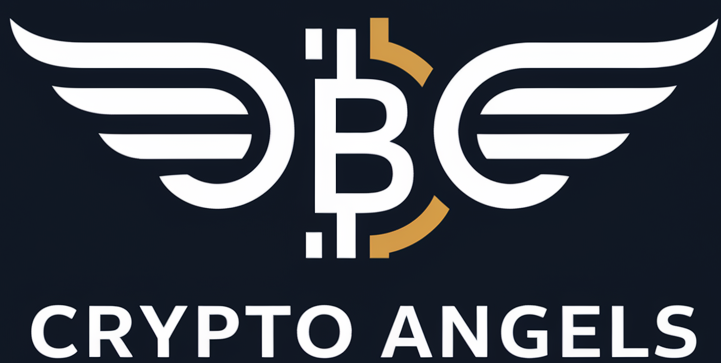What is Moonbeam Network?
Moonbeam Network is a smart contract platform that offers an Ethereum-compatible environment built on the Polkadot network. It allows developers to deploy existing Solidity smart contracts and DApps with minimal changes, while benefiting from the scalability, interoperability, and shared security of the Polkadot ecosystem.
Moonbeam aims to provide a seamless experience for Ethereum developers looking to expand their projects to Polkadot, leveraging the best of both worlds. By combining the familiarity of Ethereum’s tools and infrastructure with the advanced features and scalability of Polkadot, Moonbeam opens up new possibilities for decentralized applications.
Moonbeam’s Ethereum Compatibility
One of the key selling points of Moonbeam is its Ethereum compatibility. Developers can use existing Solidity smart contracts and tools like Truffle, Remix, and MetaMask on Moonbeam with minimal modifications. This compatibility layer ensures a smooth transition for Ethereum developers, reducing the learning curve and development time.
Moonbeam supports popular Ethereum libraries and integrations, such as Web3.js, Ethers.js, and The Graph. This allows developers to leverage their existing knowledge and codebase while tapping into the benefits of the Polkadot network. By providing an Ethereum-like environment, Moonbeam lowers the entry barrier for developers looking to explore and build on Polkadot.
Moonbeam as a Polkadot Parachain
Moonbeam is designed to operate as a parachain within the Polkadot network. Parachains are individual blockchain networks that run in parallel, connected to the main Polkadot Relay Chain. By being a parachain, Moonbeam benefits from the shared security, interoperability, and scalability features of the Polkadot ecosystem.
Built using the Substrate framework, Moonbeam inherits the modular and customizable architecture of Polkadot. This allows Moonbeam to optimize its performance, implement unique features, and seamlessly integrate with other parachains. The shared security model ensures that Moonbeam’s network remains secure and resilient, leveraging the collective security of the entire Polkadot network.
Key Features of Moonbeam
Moonbeam offers several key features that enhance its functionality and usability:
- On-Chain Governance: Moonbeam implements a decentralized governance model, allowing token holders to participate in decision-making processes and propose changes to the network.
- Cross-Chain Integrations: Moonbeam facilitates seamless cross-chain interactions with other parachains within the Polkadot ecosystem, enabling the transfer of assets and data between different blockchain networks.
- Web3 Compatibility: Moonbeam supports popular Web3 wallets and tools, making it easy for users to interact with DApps and manage their assets.
- Developer-Friendly Tools: Moonbeam provides a suite of developer tools, including a block explorer, API endpoints, and comprehensive documentation, to streamline the development process.
Glimmer (GLMR) Token
Moonbeam’s native utility token is called Glimmer (GLMR). GLMR serves multiple purposes within the Moonbeam ecosystem:
- Governance Rights: GLMR token holders have the ability to participate in the governance of the Moonbeam network, voting on proposals and shaping the future direction of the platform.
- Staking Rewards: Token holders can stake their GLMR tokens to help secure the network and earn staking rewards in return.
- Transaction Fees: GLMR is used to pay for transaction fees on the Moonbeam network, similar to how Ether (ETH) is used on Ethereum.
The total supply of GLMR tokens is capped, ensuring scarcity and potential value appreciation as adoption and demand for the Moonbeam network grows.
Moonbeam’s Security Model
Moonbeam benefits from the shared security model of the Polkadot network. By connecting to the Polkadot Relay Chain, Moonbeam inherits the robust security features provided by the Polkadot consensus mechanism.
The Polkadot Relay Chain is secured by a large number of validators, who are incentivized to act honestly and maintain the integrity of the network. This decentralized security model ensures that Moonbeam remains resilient against attacks and malicious actors.
Additionally, Moonbeam implements its own security measures, such as smart contract audits, bug bounties, and rigorous testing, to ensure the safety and reliability of its platform.
Moonbeam for Developers
Moonbeam is designed to be developer-friendly, providing a familiar and intuitive environment for Ethereum developers to build and deploy their projects. Whether you’re an experienced Solidity developer or just starting out, Moonbeam offers the tools and resources you need to get started quickly.
Building on Moonbeam
Building on Moonbeam is similar to building on Ethereum. Developers can use Solidity to write smart contracts and leverage popular Ethereum development tools like Truffle, Remix, and Hardhat. Moonbeam’s Ethereum compatibility layer ensures that most existing Ethereum contracts can be deployed on Moonbeam with minimal modifications.
In addition to Solidity, Moonbeam also supports smart contract development using the Substrate framework. Substrate is a modular blockchain development framework that allows developers to build custom blockchains with specific features and functionalities. By supporting both Solidity and Substrate, Moonbeam provides developers with flexibility and choice in their development approach.
Moonbeam offers a range of developer tools and resources to facilitate the development process:
- Moonbeam Documentation: Comprehensive documentation guiding developers through the process of setting up a development environment, writing smart contracts, and deploying DApps on Moonbeam.
- Moonbeam Truffle Box: A preconfigured development environment that includes all the necessary tools and dependencies to start building on Moonbeam quickly.
- Moonbeam Explorer: A block explorer that allows developers to view transactions, blocks, and smart contract interactions on the Moonbeam network.
- Moonbeam Faucet: A service that provides developers with test tokens to interact with the Moonbeam testnet and deploy contracts without incurring real costs.
Moonbeam’s Multi-Chain Vision
Moonbeam’s vision extends beyond being just an Ethereum-compatible platform. It aims to be a hub for multi-chain interoperability within the Polkadot ecosystem. By leveraging Polkadot’s cross-chain communication capabilities, Moonbeam enables seamless integration and interaction with other parachains.
This multi-chain approach opens up new possibilities for developers to build applications that span multiple blockchains. For example, a DApp built on Moonbeam can seamlessly interact with assets and data stored on other parachains, enabling cross-chain liquidity, data sharing, and composability.
Moreover, Moonbeam’s Ethereum connectivity allows it to serve as a bridge between the Ethereum and Polkadot ecosystems. Developers can deploy their Ethereum-based projects on Moonbeam and then connect them to the broader Polkadot network, benefiting from the scalability and interoperability features offered by Polkadot.
Moonbeam also plans to support blockchain bridges to other popular blockchain networks, such as Bitcoin and Cosmos, further expanding its multi-chain capabilities and enabling a more interconnected blockchain ecosystem.
The Moonbeam Team
Moonbeam is developed by PureStake, a blockchain infrastructure company founded by Derek Yoo. The PureStake team brings extensive experience in blockchain technology, with a focus on delivering secure and reliable infrastructure solutions.
PureStake’s Blockchain Expertise
PureStake has a track record of providing robust blockchain infrastructure and developer tools. Prior to Moonbeam, PureStake was involved in various blockchain projects, including the development of a highly performant Ethereum client called Nimbus.
The PureStake team consists of experienced blockchain engineers, researchers, and entrepreneurs who are committed to advancing the adoption and usability of blockchain technology. They bring a deep understanding of the challenges and opportunities in the blockchain space and are well-positioned to deliver a high-quality smart contract platform.
PureStake’s expertise in blockchain infrastructure ensures that Moonbeam is built on a solid foundation, with a focus on security, reliability, and performance. The team’s experience in developing and maintaining blockchain clients and infrastructure solutions gives Moonbeam a competitive edge in terms of technical excellence and long-term sustainability.
With a strong team behind it, Moonbeam is poised to become a leading smart contract platform in the Polkadot ecosystem, empowering developers to build innovative and interoperable decentralized applications.
See also:





